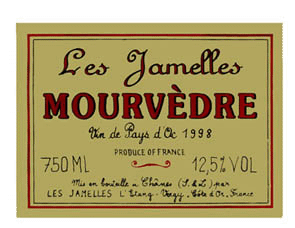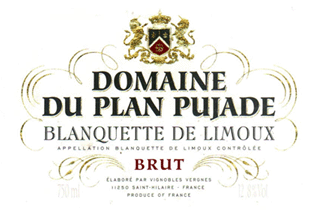![]()
Recent Articles

Weekly Wine & Spirits Columnist - Michael Vaughan
Midi - France's Last Wine Frontier
Original Unedited Article for Saturday, June 24th, 2000
Today’s
LCBO “Midi Reflections” release highlights 21 new Vintages products. For
a long time the wines of the Midi were virtually unknown. Midi refers to
the large expanse of land in southern France bordering the Mediterranean
and forms an arc running from the mouth of the Rhone in the east to the
Pyrénées Orientales along the Spanish border in the west.
While technically Midi isn’t a wine district, it
encompasses the most prolific wine-producing region in France accounting
for 2 out of every 5 bottles produced. To put it into an international
perspective, Midi has twice as many vineyards as are planted in California
and three times that of Australia! Historically, it was the home of cheap
thin red “vin de table” (VDT) or “vin de consummation courante”
which were invariably based on the unrestrained high yielding Carignan
vines - still the number one vine in France!
To some, this region was historically synonymous
with “plonk.” Ironically, a few of these “inferior” wines were
illegally blended into “superior” higher-priced wines from other
regions which carried the respected “appellation d’origine contrôlée”
(or AC) designation. The development of modern day fingerprinting
technology (gas chromatography which can identify a wine’s components)
greatly discouraged such questionable practices.
By the late 1960’s, the wines of Midi were
considered by French authorities to constitute a “dangerous” surplus.
This wine lake was generally founded on inferior grapes and even worse
winemaking techniques. Drastic steps were taken to successfully reduce
this enormous tide of vin ordinaire. Nevertheless, today’s total French
output still accounts for some 150 million cases. Interestingly enough,
more VDT is consumed within France (87%) than any other class of wine. It
can make tasty inexpensive on-the-spot carafe quaffers.
In 1968 the French created a new classification
“vin de pays” (VDP) or country wines to encourage the production and
provide recognition of better wines produced in non- appellation contrôlée
regions. Only certain grapes were eligible and yields could not be in
excess of 90 hl/ha (or 5 tons/acre) which still is almost twice as high as
most AC wines. In today’s release more than half are Vin de Pays d’Oc
(wines from the Languedoc-Roussillon region) and are invariably named
after the grapes from which they are made.
It is extremely ironic that with the exception of
Alsace, the name of the grape variety is generally not allowed to appear
on the label of the best French AC wines. The intention is to protect the
designated name (i.e. Margaux) from offshore Margaux-inspired competitors,
which are usually named after the grape variety! And it works to a certain
extent, assuming that the region, like Margaux, is well known.
Unfortunately, when it comes to the enormous Languedoc-Roussillon region,
it flounders badly because most consumers don’t have a clue about
what’s in the bottle.
Ergo, many producers have opted to produce a saleable bottle
of VDP as opposed to the more stringently controlled AC even on occasion
where the wine might qualify for AC status. This is a serious dilemma that
will not help the AC cause. A VDP may come from a specific vineyard and be
mis en bouteille à la propriété (often using a mobile bottler
when the vineyard is small). Most wines, however, are blends from various
vineyards. This enables producers to make sufficiently large quantities
capable of being advertised. In addition, they can even out qualitative
differences that occur from year to year.
 A
good example of the latter is the robust Les
Jamelles 1998 Mourvèdre available at only $9.65. It is dry with
fairly rich, earthy-prune flavours that call out for a good pepper steak.
Like many VDPs, this one is produced by an “outsider” – in this
case, Burgundian oenologist Catherine Delaunay-Favre. She uses a very long
maceration (à la Bandol) of up to three weeks on 80% of the blend that
gives it structure and depth of flavour. In order to give the wine some
“lift” in terms of fruitiness, 20% is vinified using the “maceration
carbonique” where clusters of whole berries are fermented (à la
Beaujolais Nouveau) in an anaerobic atmosphere. Unlike Beaujolais Nouveau,
there is full malolactic fermentation followed by short aging in small
oak.
A
good example of the latter is the robust Les
Jamelles 1998 Mourvèdre available at only $9.65. It is dry with
fairly rich, earthy-prune flavours that call out for a good pepper steak.
Like many VDPs, this one is produced by an “outsider” – in this
case, Burgundian oenologist Catherine Delaunay-Favre. She uses a very long
maceration (à la Bandol) of up to three weeks on 80% of the blend that
gives it structure and depth of flavour. In order to give the wine some
“lift” in terms of fruitiness, 20% is vinified using the “maceration
carbonique” where clusters of whole berries are fermented (à la
Beaujolais Nouveau) in an anaerobic atmosphere. Unlike Beaujolais Nouveau,
there is full malolactic fermentation followed by short aging in small
oak.
If you like something light and fruity, don’t miss
the Domaine du Météore 1998
($13.50) which carries the Faugères AC. This one tastes as if it
was 100% carbonic maceration with its bright, attractive, strawberry-plum
fruit flavours. It’s a wide-appeal, versatile, medium-light bodied,
summer quaffer is at its peak.
Space doesn’t permit analysis of the 20 AC regions
spread across Midi’s four départements (west to east): Pyrénées
Orientales, Aude, Hérault and Gard. On top of that, there are some 59
distinctive locally-specific Vin de Pays d’Oc. Without question, more
sophisticated imbibers will track down the type of wine they enjoy by
specific region. Fans of full-bodied red Fitou, for instance, an AC that
has been around since 1948, already know what they want to buy. This
plethora of names, various regions, appellations, etc. is likely
disheartening and probably of little concern to the average modern-day
consumer who wants things presented in a simple straightforward manner. As
a result, many new large internationally recognized French, Australian and
even American producers have moved into the Midi and promote their own
brand names with a vengeance!
Of the seven whites presented, I had two best buys.
The first was the Domaine de la
Coste 1999 Muscat Sec ‘Vin du Baron’ ($12.50). This VDP winner of
the Cuvée Prestige des Vignes d’Or has lovely, dry but rounded, gently
spicy, ripe pear and grapefruit flavours – a perfect summer sipper and
great for Thai cuisine. It’s
bound to enchant fans of Alsatian muscat.
Perhaps more complex is the barrel aged Limoux
1996 ‘Toques et Clochers’ ($14.95). This spicy Chardonnay has
expansive, medium bodied, attractive, ripe pear flavours with a long
finish. Perfect for white meats and poultry, only 80 cases of 6 are
available and it’s definitely worth trying.
Unfortunately, this release is not without its share
of disappointments. First, I felt that there was a much higher proportion
of bottle variation than normal with some 15% of the samples appearing to
be corked! In addition, some
of the selections failed to shine - the J. & F. Lurton 1996 Cabernet
Sauvignon/Merlot Villa Garros ($19.95) was unpleasantly tart and malic.
Another pass would be the 1998 Domaine Piccinni ($11.75) with its soy and
sweetish raspberry jam flavours.
 Well
worth a detour, however, is the sole sparkler of the release. The
non-vintage highlight Blanquette de Limoux Brut Domaine du Plan Pujade has spicy,
attractive, ripe apricot fruit on the nose and great zest on the palate.
It’s dry but rounded, bright, citrusy, red apple flavours are followed
by a lingering, well-balanced finish.
A real crowd pleasing style that is quite delicious and at its
peak. Only 200 cases are available at $13.85 so you will have to hurry out
today to get this one.
Well
worth a detour, however, is the sole sparkler of the release. The
non-vintage highlight Blanquette de Limoux Brut Domaine du Plan Pujade has spicy,
attractive, ripe apricot fruit on the nose and great zest on the palate.
It’s dry but rounded, bright, citrusy, red apple flavours are followed
by a lingering, well-balanced finish.
A real crowd pleasing style that is quite delicious and at its
peak. Only 200 cases are available at $13.85 so you will have to hurry out
today to get this one.
It’s worth noting that this is the first time this estate-bottled bubbly has appeared in Canada. Technically speaking, the town of Limoux rests slightly apart from the Midi in the higher Pyrenean foothills. Made in the classic méthode champenoise, it relies on the traditional Mauzac Blanc grapes. It is also surprising to discover that this non-vintage assemblage of several years is more expensive to produce than a straight vintage! While it’s different than Champagne, I can’t help thinking, Vive la différence!
Copyright Gargoyles Limited 2000
Toronto, Ontario
mbv@total.net